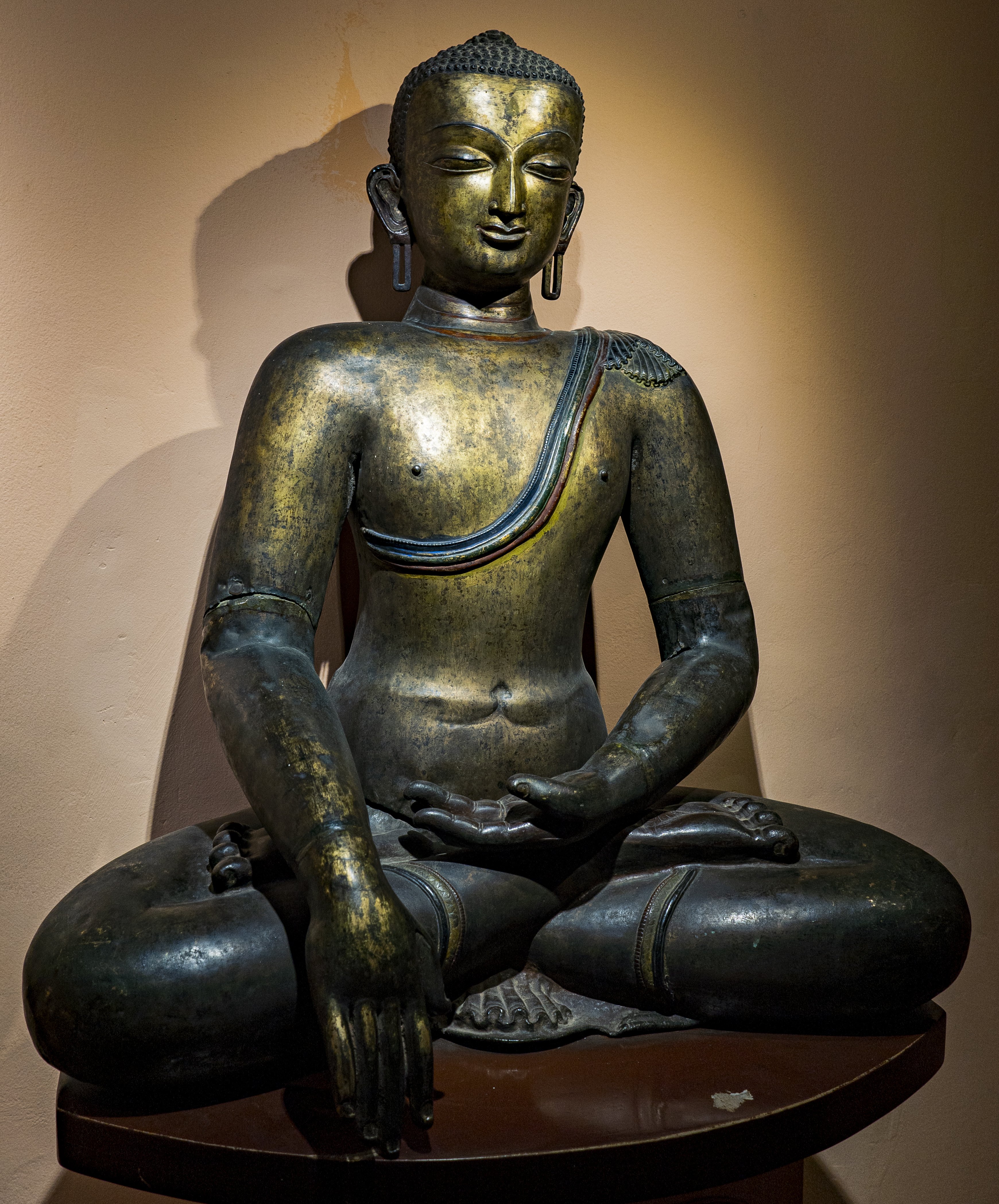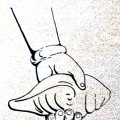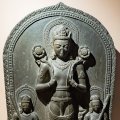Patan Museum (Nepal): photo 176
Photo 176 of 212 in Gallery: Patan Museum (Nepal)

Image title: Shakyamuni Buddha (copper sculpture)
Description of the photo
This Copper sculpture shows an image of Shakyamuni Buddha, from the 17th/18th century origination from Nepal.—Materials used: Copper, gilt, paint.
Probably once the principal image of a monastery shrine, this impressive image of the Buddha in his popular Victory over Mara pose, provides a remarkable example of the skill of Nepalese artisans in transmuting sheets of copper into stunning images of the gods. Except for the solid cast hands and the lower portion of the ears, the image is hollow, entirely composed of numerous, vari-sized sheets of copper ingeniously fastened together by almost invisible dovetailing. This joinery is supplemented with riveting as necessary. After forming the head in the repoussé technique explained nearby, it was fitted over the torso and held in place with copper rivets, carefully concealed on the front but visible in the rear. Similarly, the torso is fitted over and riveted to the lower part of the image. Rivets were also used to hold the edges of the dovetailed sheets together after they had been rolled up to make the arms. As a final step, the front of the image was gilded. At some time also the deity's hair was painted blue, his palms and soles painted red, and the edges of his robe colored. There are also traces of red paint around his neck and ears.
Images of other materials such as stone or clay traditionally were often later enriched with gilded sheet copper coverings known as kosha or kavaca [kavacha]. Whereas those for small preexisting images were made exactly like the Bhairava head in the adjoining cases, covers for large images were made in a technique paralleling the construction of this image. In this case, however, some of the pieces were not joined permanently by dovetailing but riveted to facilitate assembly around the pre-existing image.
Gallery information:
The Patan Museum is located on the Durbar square of Patan (Lalitpur/Lalitapura, Kathmandu, Nepal) which is associated Keshav Narayan Chowk (Keshavnarayan)—a form of Lord Vishnu. Being listed as a World Heritage Site, the whole of Durbar square is filled with exquisite temples, sculptures and other ancient structures, of which the ancient history history can be traced to the Malla Kings of Lalitpur. It is an important site for both Buddhism and Hinduism.
Photo details:
Date: 2019-12-02
Camera: SONY ILCE-6400
Exposure: 1/25
Aperture: f/5
ISO: 100
Focal length: 18mm
High resolution:
Download file
Size: 6.50 MB
Resolution: 3480 x 4194
© Photograph by Gabe Hiemstra.
License: CC BY-NC-ND 4.0

